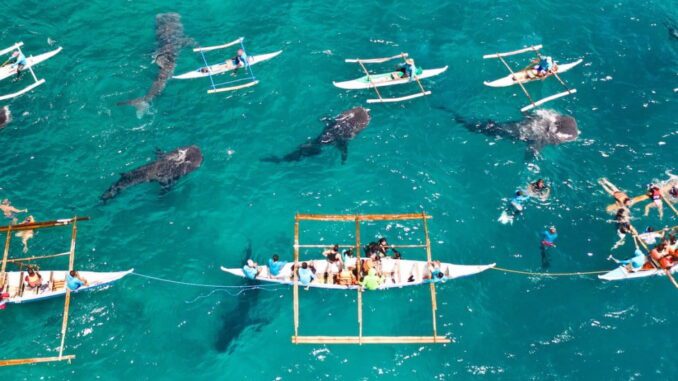
The islands of the Philippines lure those looking for a taste of both tropical and historical attractions. The municipality of Oslob, found on the island of Cebu, is no exception. Located in the internationally renowned Visayas region of the Philippines, Oslob features picturesque beaches, stunning reefs and an assortment of forests dotted with waterfalls.
But that is not all Oslob has to offer. Recently, the municipality has become a thriving tourist attraction for a different reason.
Videos have been popping up all over the internet of tourists swimming with whale sharks just off the beaches of Oslob. This has triggered a tourism frenzy in the region. This all began with local fisherman, who figured out that they could lure the sharks to the beach by feeding them a small type of shrimp. Since then the sharks have become a staple attraction for the region, to the extent that the name Oslob has almost become synonymous with the whale sharks.
So, let’s now dig into a bit more about this vibrant region of the Philippines.
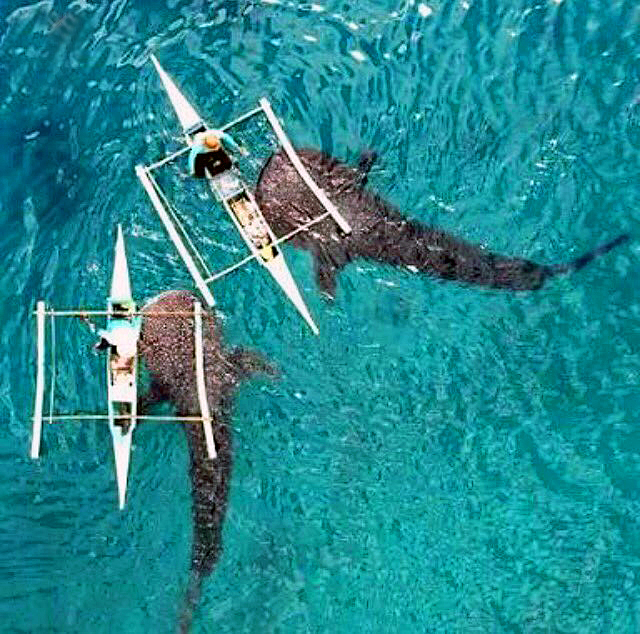

Where it all started: Oslob’s History and Landmarks
Despite what it is now, Oslob hasn’t always been the thriving tourist destination it is today. Tucked away in the relatively isolated south side of the island of Cebu, the area has actually been inhabited for a surprisingly long time.
Oslob begun life in 1690 as a visita of Boljoon, which is another municipality in the area. Oslob then went on to become a town in 1844, although, the town was originally named Bolocboloc.
The Spanish colonizers – who had a strong presence on the island of Cebu – changed its name to Toslob; which is a Visayan term meaning “dip” or “soak”. Eventually, they stopped pronouncing the T, and it became simply Oslob.
Oslob is a town rich with Spanish history. You will see their mark throughout the town, mostly by means of their defensive structures and churches throughout the region. A lot of these structures were used to defend against Moro raiders from neighbouring islands.
With a short stroll through the town, you will eventually come across Aragones street. Here you will spot the Cuartel (barracks) made for Spanish soldiers, stationed there to defend the area. It is beautifully constructed, made of thick coral stones, meant to serve as protection from invaders. However, the construction of these barracks was never fully finished, due to Spain giving up the country to the Americans in 1899.
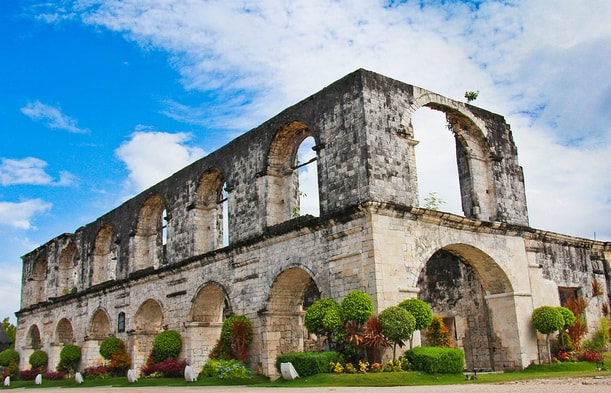

Only meters away from the Cuartel is the Our Lady of Immaculate Conception Church. This church, whose construction started in 1830, took 18 years to build and had buttresses and additions added onto it in the following 12 years after it’s construction.
The church was burned down in 1945 as a result of the Japanese invasion of the Philippines during World War 2. The Japanese were using the church to hold Filipino POWs; the fire helped release the Filipino Guerilla fighters being held inside. The Church was eventually restored 10 years later.
Just like the Cuartel, the Church was cut out of coral stone and serves as a meaningful piece of history to the locals and tourists of Oslob.
The third and oldest monument of Oslob is the Baluarte – which is Spanish for watchtower. Built in 1788, this watchtower was made to provide a safe and practical observing platform to assist guards in defending the area.
This highly effective system was successfully used in 1815, as the townspeople of Oslob were able to repel an attack by Moro Raiders. After their successful defence against the attackers, the townspeople, who lived in a settlement in Daanglungsod, decided to move from that townsite to its present location.
Daanglungsod, located 128 kilometres north of Oslob, is actually another popular tourist location on Cebu. While being comprised of mostly historical ruins, is still known for its breathtaking tourist attraction and historical landmarks.
Of course, no Philippine experience would be complete without encountering some magnificent waterfalls, which leads us to Tumalog Falls.
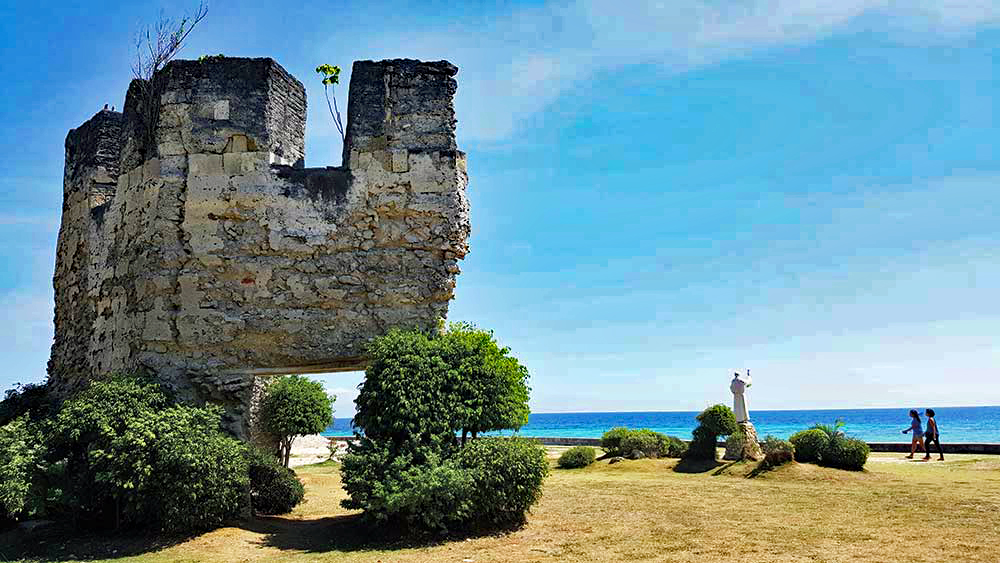

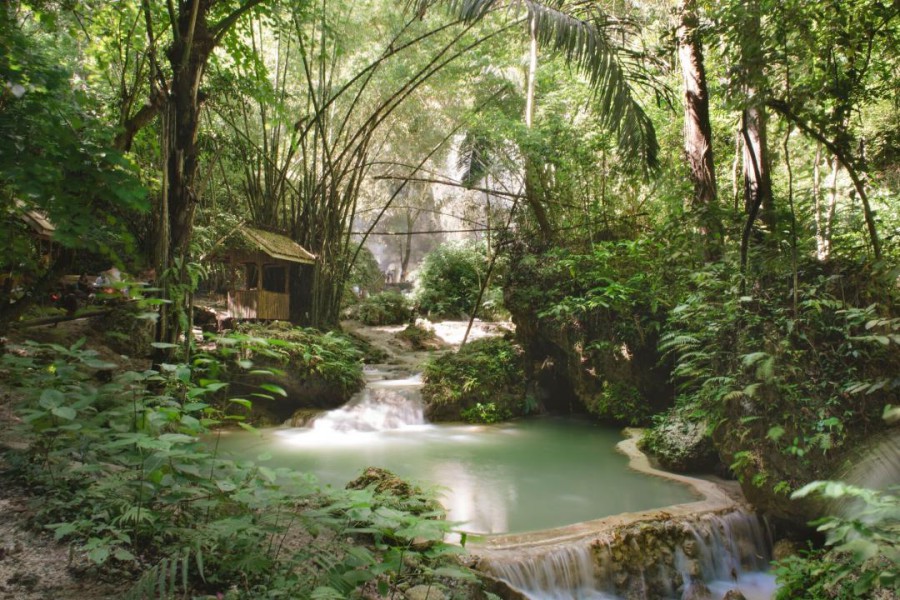

Experience Tumalog Falls
Tumalog Falls is another attraction in the region which recently begun to gain notoriety, and for good reason. The towering falls, at some points stand as tall as 100 meters, making them the highest in Cebu. Despite the somewhat remote location, the scenic Tumalog Falls has undergone development to enable visitors to experience the site in comfort.
While they are not in Oslob, they are very close to the town, and the easiest way to access them would be renting a bike/scooter to drive there-which costs approximately 200-300 pesos per day. While some may opt for taking a moto-taxi, which costs about 100 pesos per person one way, most people choose to go with the bike, as it is the cheaper option, especially if you wish to go to the other waterfalls. While the other waterfalls are not actually a part of Oslob, they may be worth checking out if you are in the area.
And now onto the main attraction of Oslob:
The Whale Sharks of Oslob
The Whale Sharks – known by the locals as “butanding” or “tuki”- are a magnet for tourism in the region.
It’s not often that tourists have the opportunity to get up close and personal with the largest living fish in the world! Whale sharks can grow up to 18 meters long and can weigh over 15 tons. Their amazing size is not the only thing that makes them a viable tourist attraction.
Surprisingly enough, this shark species is non-aggressive and actually quite friendly towards humans, and while it may approach a human out of curiosity, it will never attack. People have even been recorded riding whale sharks, their docile behaviour makes them very easy to examine for scientific purposes.
The whale shark’s diet mainly consists of krill, phytoplankton, and zooplankton. Which, at first seems strange, until you look at how small their 300 plus teeth actually are. Whale sharks will also feed on larger fish and molusks, they are even known to snack on tuna.
The whale sharks have generated a significant amount of tourism around Oslob, but there is a cost.
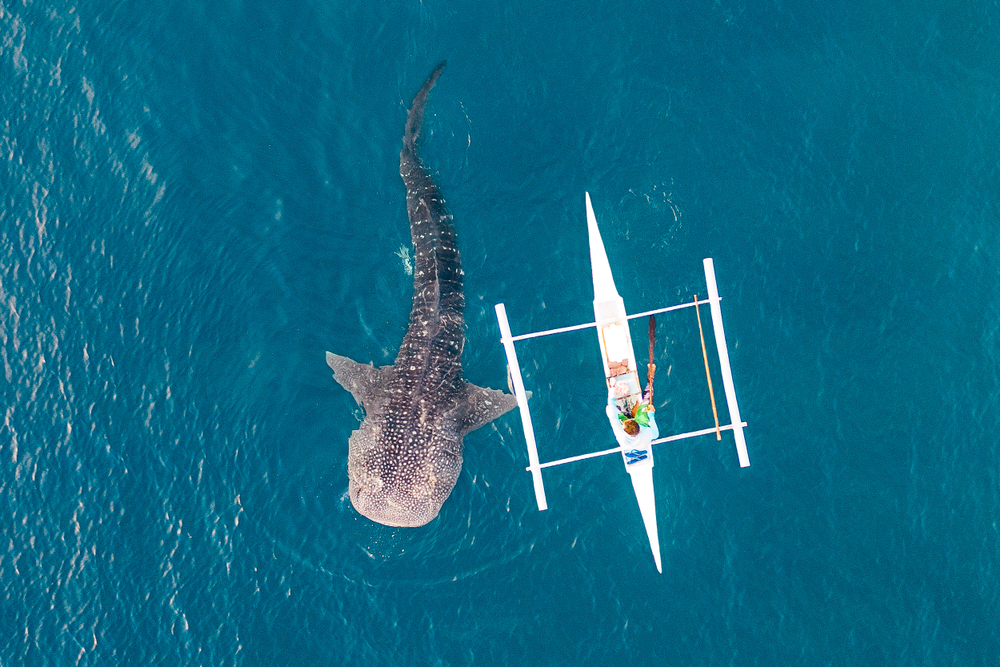

Potential Extinction:
Unfortunately, the whale shark is labelled an endangered species, due to previous overfishing. While fishing or eating whale sharks became illegal in the Philippines in 1998, they are still subject to greater risk in this area, due to tourism.
Scarring and abrasions have been found more commonly on the Whale Sharks from Cebu, and these abrasions can be directly linked to the sharks coming into contact with boats when tourists attempt to feed them, while more serious scarring may occur if they come into contact with their propellers.
Even if it is not the goal of the tourist to feed the shark, the increased amount of whale sharks in the area due to them being routinely fed has been a contributing factor in these unintentional injuries to the sharks. While these injuries may not be immediately lethal, they can increase stress and strain on the whale shark-decreasing it’s lifespan, and facilitate the spread of disease among them.
Also, it has been proven that even touching the whale shark is likely to shorten their lifespan, as it removes the mucous layer on their surface that protects them against infections. There are a number of ways that you can still view the whale-sharks without having the same impact on their species, unfortunately, Oslob is a community that does very little to slow down or stop the damage that tourism is causing.
Getting there:
When flying to the island of Cebu, you will be arriving at Cebu City. Oslob is another 120 km south of the city. To get from Cebu to Oslob you basically have 3 options.
Option 1: Coach bus
The cheapest and most common option for budget travellers, which will cost around 200-300 pesos total(or about $10-$15 US dollars). Remember to check and keep up to date with the often-fluctuating peso-US dollar conversion rates. The trip takes about 3 – 3.5 hours, depending on the number of passengers, traffic, and which bus you take. These buses leave regularly from Cebu Cities south bus terminal.
Option 2: Shared van
This option is a little bit more expensive, $21-$25 per person, but offers a little bit more comfort at the same time. The van will pick you up from your accommodation, or you can find vans at one of several van terminals across Cebu City. It is not uncommon for vans to pick up each passenger personally, but after it is generally an express ride to your destination.
Option 3: Private Transfer
A taxi will generally be your most expensive, and most comfortable option. The total expense of it will depend on if you are travelling alone or with someone else.
Private transfers are quite easy to come by once you reach Cebu city. You can simply ask taxi drivers, hotel staff and they will be able to put you in contact with a driver. If the driver is willing to negotiate you can often get a good price for your ride.
Oslob is an amazing place to experience: historically and scenically, and the whale sharks are a vital part of that experience. If you do decide that you want to see the whale sharks, it is important to be mindful of you potential effect on not only them but on the environment and ecosystem that they will always be a part of.
There has already been evidence of this collateral damage, with certain areas exhibiting more algae, plankton, and krill, causing a decrease in the available sunlight through the ocean surface to other plants and species that require it. Please consider these environmental impacts that you may have if you are thinking about seeing whale sharks up close, and consider some of the viable alternatives that may be better for the species existence.


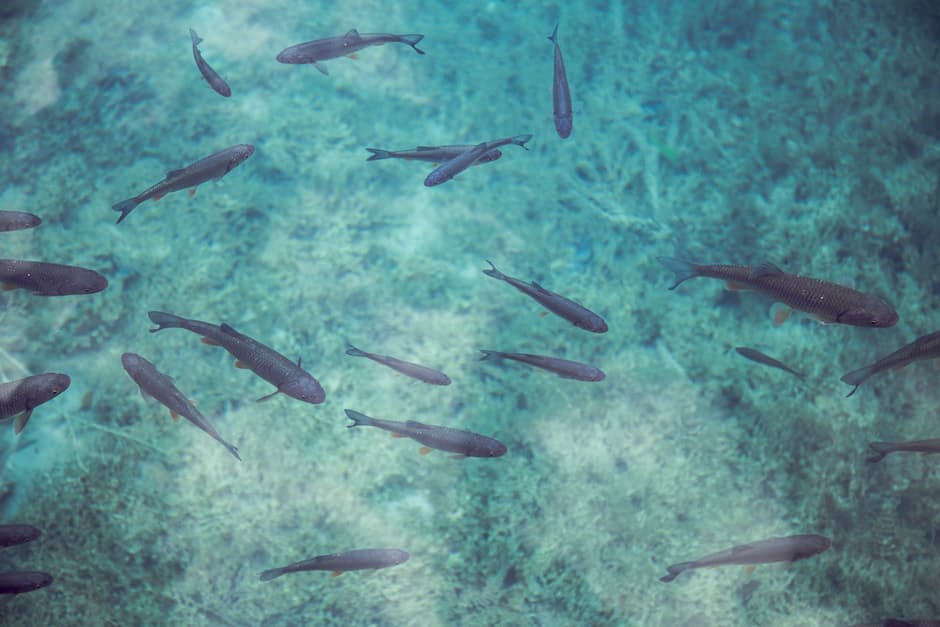

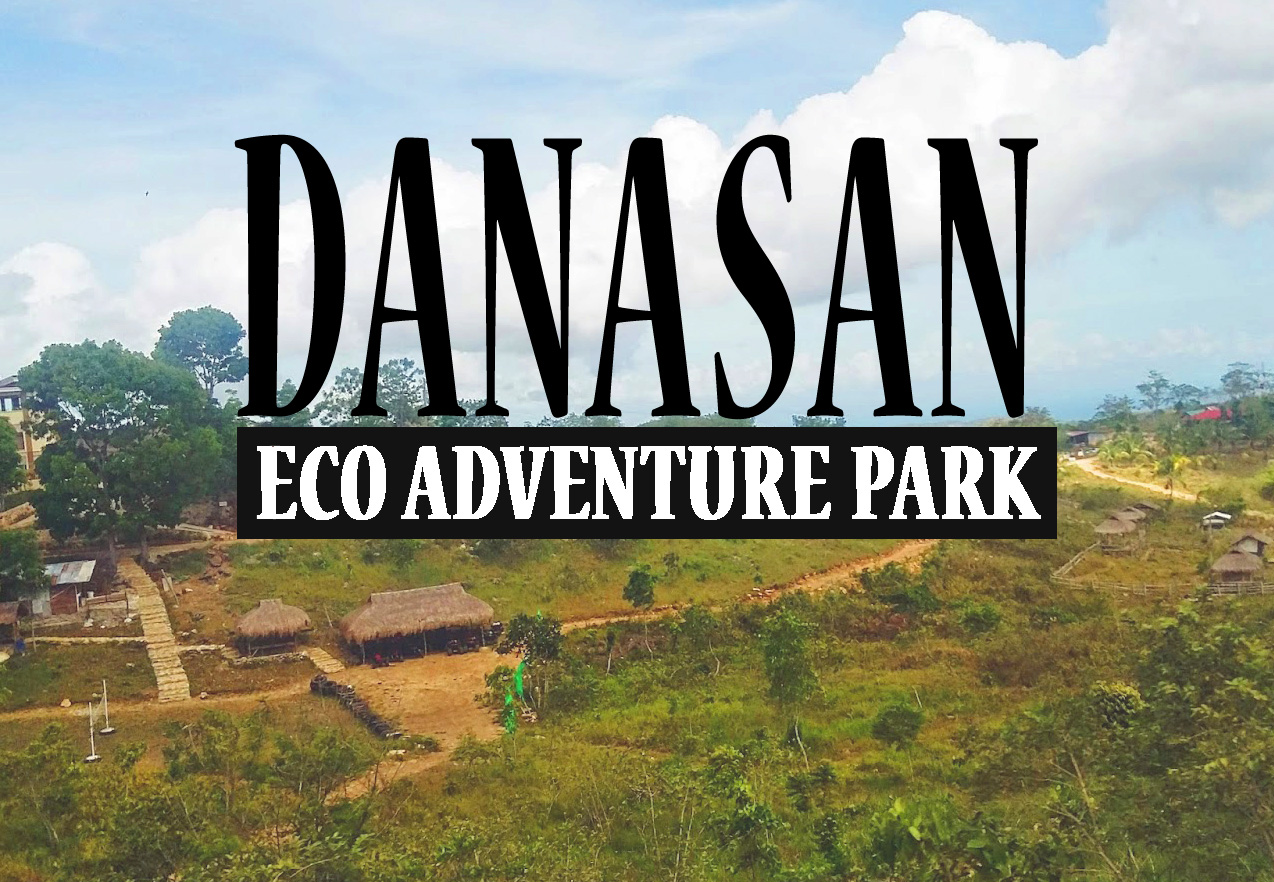
Be the first to comment